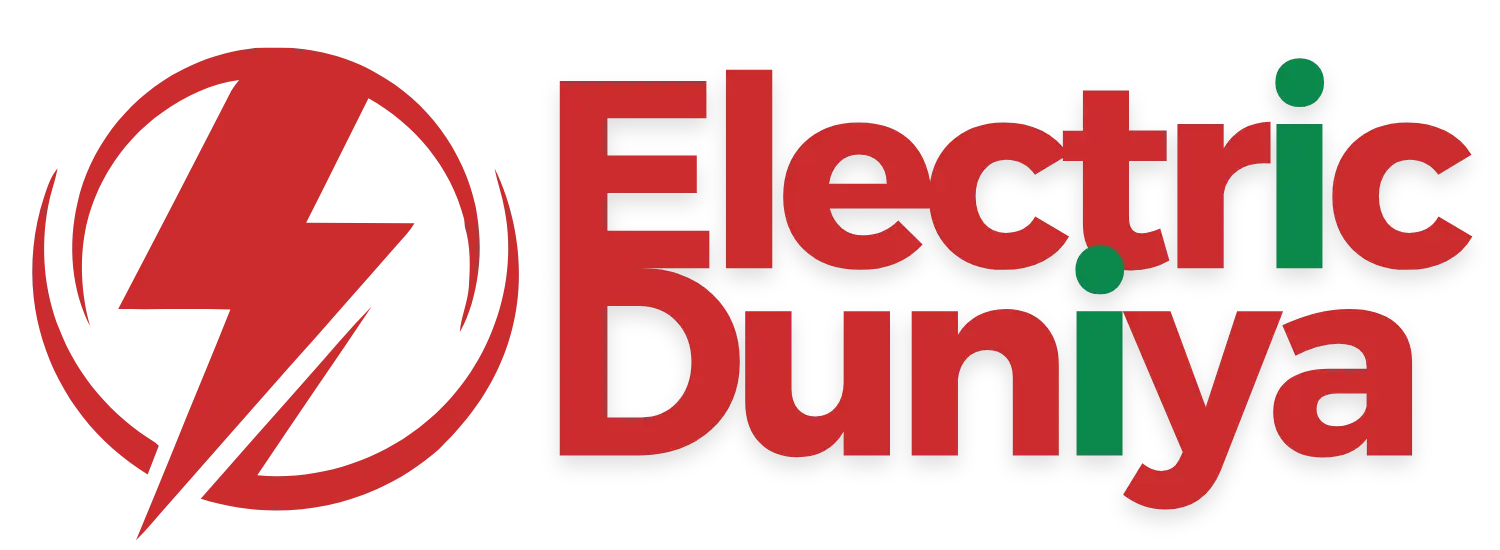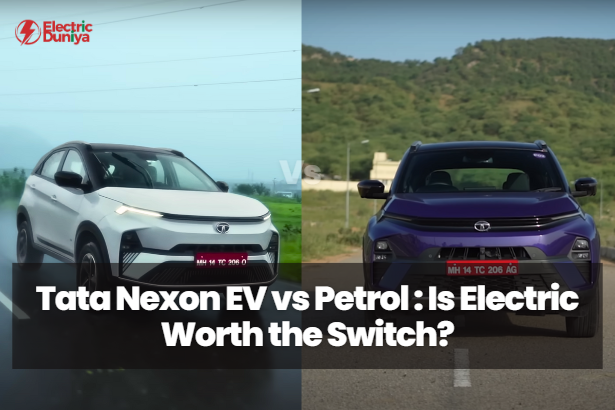I own a Tata Nexon EV and Cruvv EV and I am satisfied with the vehicles. But in this blog, I will try to tell you about this EV and its petrol version.
Are you confused about choosing between the Tata Nexon EV and Petrol variants? I was in the same situation when I bought mine a year ago.
If you’re considering the Tata Nexon but aren’t sure which one is the right choice, here’s my advice: Go for the Tata Nexon EV if you prefer an electric car over a petrol one.
The Nexon EV not only offers a greener alternative with zero emissions, but it also comes with a lower running cost compared to its petrol counterpart.
Furthermore, home chargers for the Tata Nexon EV make daily charging incredibly convenient, allowing you to power up overnight and be ready to go every morning.
Before you decide, read our blog. I’ve covered the pros and cons of both variants to help you make the best choice for your needs.
| Features | Tata Nexon EV | Tata Nexon Petrol |
|---|---|---|
| Price | ₹14.49 Lakh | ₹8.00 Lakh |
| Engine Capacity | Electric Motor (Permanent Magnet Synchronous) | 1199 cc |
| Power Output | 127 bhp | 118 bhp |
| Torque | 240 Nm | 170 Nm |
| Transmission | Single-speed automatic | 6-speed manual/automatic |
| Fuel Type | Electric | Petrol |
| Battery Capacity | 30.2 kWh | N/A |
| Range | 312 km (real-world approx. 200 km) | 17 kmpl (ARAI certified) |
| Charging Time | 6 hours (AC, 7.2 kW) | N/A |
| Top Speed | 120 km/h | 175 km/h |
| Infotainment System | 7-inch touchscreen, 8-speaker Harman system | 7-inch touchscreen, 8-speaker Harman system |
| Safety Features | Dual airbags, ABS with EBD, ISOFIX | Dual airbags, ABS with EBD, ISOFIX |
| Unique Features | Regenerative braking, Eco and Sport modes | Xpress Cool feature, Hill Hold Control |
| Weight | Approx. 1400 kg | Approx. 1188 kg |
Performance and experience related to driving
The Nexon EV from Tata Motors delivers a smooth and silent driving experience. All this was confirmed to me after talking to the comparison expert of this brand.
Nexon EV has a 30.2 kWh lithium-ion battery. It generates 129 PS of power and 245 Nm of torque. This setup offers instant acceleration.
Nexon EV accelerates from 0 to 100 km/h in about 9.5 seconds. The electric motor gives a consistent and responsive performance.
Nexon EV also has regenerative braking efficiency.
On the other hand, the petrol Nexon has a 1.2-liter turbocharged engine. This petrol version generates 120 PS and 170 Nm of torque.
Although the torque of the Nexon petrol version does not match the electric Nexon’s instant torque, it still provides a satisfying driving experience.
The petrol engine of the Nexon petrol version provides an engaging drive. You also get decent acceleration and responsive handling.
In the Nexon petrol version, you do lack the silent operation and smoothness of the EV.
Fuel Economy and cost of running
I talked about the economic factor in detail. After all, money matters. This is the feedback I had.
Tata Nexon EV has the advantage because of its low running costs. Electricity is generally cheaper than petrol. Because of this, you have low operating expenses.
The Nexon EV provides an ARAI-certified range of around 312 km on a single charge. This is sufficient for daily road trips.
The maintenance costs are lower for this EV because of fewer moving parts and no oil changes.
On the other hand, the petrol Nexon has a fuel efficiency of approximately 17-22 km/l. It depends on driving conditions and maintenance.
Although it is less expensive to refuel compared to the larger engines, the cost of petrol can fluctuate. This will impact the running costs.
For this petrol version, you also need regular maintenance. This includes oil changes and frequent servicing. All this will affect the expenditure.
Environmental factor
I did talk about the environmental factor with the environmental expert. Nexon EV is emission-free. The carbon footprint.
With this EV, the carbon emission in the atmosphere is almost zero.
The petrol Nexon releases CO2 and other pollutants. These lead to air quality issues.
Charging and refuel
We had a good discussion about charging and refuelling options for both. It was satisfactory.
Tata Nexon EV supports fast charging. It reaches 80% charge in approximately 60 minutes with a DC fast charger.
You need a standard AC charger at home and will take around 8-9 hours for a full charge.
With home charging solutions for this version and public charging stations, you do not face an obstacle.
Refuelling the petrol Nexon is quick. The petrol stations are widely available. More available facilities make it good for remote trips.
Resale Value
To be frank enough, I did talk about the resale value of both versions when I bought the electric one.
Tata Nexon EV provides you with a good resale value because of lower running and maintenance costs.
The initial cost of petrol Nexon is lower, but higher fuel and maintenance costs decrease its resale value with time.
Maintenance Cost
The tentative maintenance cost for the Tata Nexon Petrol in India is approximately ₹3,000 to ₹4,500 per year.
It generally covers routine services like oil changes, filter replacements, and general inspections.
On the other hand, the Tata Nexon EV has a higher maintenance cost, estimated at ₹4,000 to ₹6,000 annually.
The reason is because of the specialised servicing for the electric powertrain, battery checks, and software updates.
Tata Motors offers comprehensive servicing and warranty packages for both these versions.
The above service costs mentioned by me are approximate. These can vary depending on usage and service provider.
Final Thoughts
Based on my talk to experts at the time of the purchase of the Nexon EV, the electric version may come with a high investment initially but it is economical in the long run.
I bought it based on certain factors like no fuel costs, ecological suitability and apart from my passion for buying an EV.
In this blog, I have tried to give you some information but ultimately you have your own choice based on multiple factors and above all the initial cost factor.







